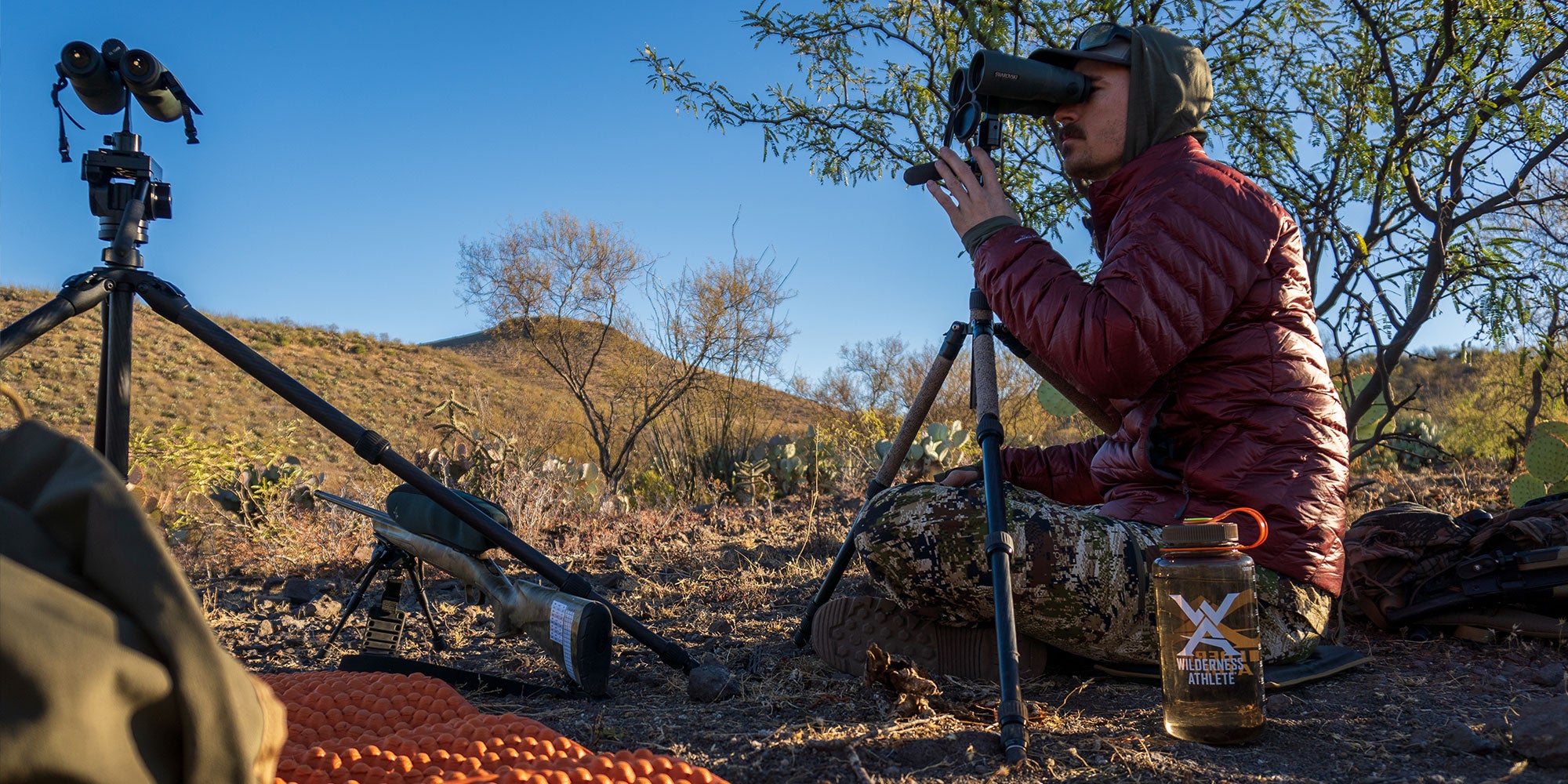on all orders over $1000

Carbon Fiber Hunting Tripods Vs Aluminum Hunting Tripods
It’s no secret that aluminum tripods are our bread-and-butter. However, we’re not blind to the fact that many hunters and photographers have made the switch to carbon fiber tripods. The reasoning is sound, but whenever we get asked we do like to consider the following variables when making a decision on the right tripod for you.
Weight
When you’re carrying your fully loaded rifle, 3 liters of water, optics, and food for a day, it’s a no-brainer to try to save weight wherever you can. Tripod weights are usually the number one factor in most hunters’ decision making - which we think is sometimes misguided.
There is no question that the weight savings afforded by a carbon fiber hunting tripod is far greater than a tripod manufactured of an aluminum alloy. The clear winner in this category is carbon fiber, but why do so many professional photographers still prefer aluminum?
Winner: Carbon Fiber
Stability
The sole purpose of a tripod is to keep things stable. Whether that be your binoculars, spotting scope, rifle scope, or camera, the more you can reduce shakiness, the better experience you’ll have with any of those items. The difference between carbon fiber and aluminum in terms of stability may be negligible to some, but if you pay close attention, it is an important variable in making a decision.
Aluminum hunting tripods weigh more than carbon fiber models of the same size. The added weight, in terms of stability, is a positive trait to have. The heavier your tripod, the less it is affected by gusts of wind or small bumps to the legs. Another factor to consider is that carbon fiber tripods often end up very top-heavy when your optics are in use.
This isn’t always a big deal if the three tripod legs are fully extended outward. However, as hunters, we often find ourselves in awkward positions, which leads to our tripods being set up in awkward positions as well. If left unattended, a gust of wind is more likely to knock over a top-heavy glassing setup than a more well-balanced one.
Please be aware that in a controlled environment, carbon fiber models are actually stiffer than aluminum, meaning more stable. But for our use case, hunting, we are never in a controlled environment.
Winner: Aluminum

Strength
What makes carbon fiber such an interesting and valuable material is its strength-to-weight ratio. With a strength-to-weight ratio 10 times that of aluminum, it’s no question carbon fiber is the clear winner.
Winner: Carbon Fiber
Noise
Noise is a factor not often considered when making a decision between carbon fiber and aluminum. The fact of the matter is that aluminum tripods are significantly louder than carbon fiber when deploying and when accidentally being smacked against a rock.
When doing your best to make as little noise as possible, a carbon fiber model will be quieter than its aluminum counterpart.
Winner: Carbon Fiber
Longevity
If you’re looking to buy a tripod for life, there are a few things to consider. Carbon fiber is stronger than aluminum but is a complicated material that cannot be easily reproduced. Breaking or bending a leg section or center column is a matter of when, not if, when you're a lifetime hunter. Carbon fiber tripods are more corrosion resistant than aluminum, but finding replacement parts for a carbon fiber model proves more difficult than an aluminum one.
Try looking up replacement parts for carbon fiber parts released 10 years ago, and you’ll realize you’re better off buying a new tripod kit, outright. Whereas if you’re looking for a replacement part made from aluminum, any machine shop can create leg sections for you.
Winner: Aluminum
Cost
At the end of the day, the best tripod you can buy is the one you can afford. Aluminum and carbon fiber tripods both have price tags that range from a couple hundred dollars to several thousand. However, on average, carbon fiber is more expensive than aluminum, both in terms of initial purchase and maintenance costs.
Winner: Aluminum

Conclusion
I hate to do this to you, but we have a draw. Like most pieces of gear, you have to take into consideration your style of hunting and your budget. Carbon fiber and aluminum tripods offer many advantages and disadvantages respective to their material. It’s up to you to find out what you’re willing to trade-off. We love recommending carbon fiber tripods when ours doesn’t meet the requirements, our only ask is you don’t get one with a built-in ball head.
There are many interesting carbon fiber tripods being produced, some of our favorites being the Slik Pro CF-634, the Peak Design Travel Tripod, and the Manfrotto 290 Xtra Carbon Fiber.